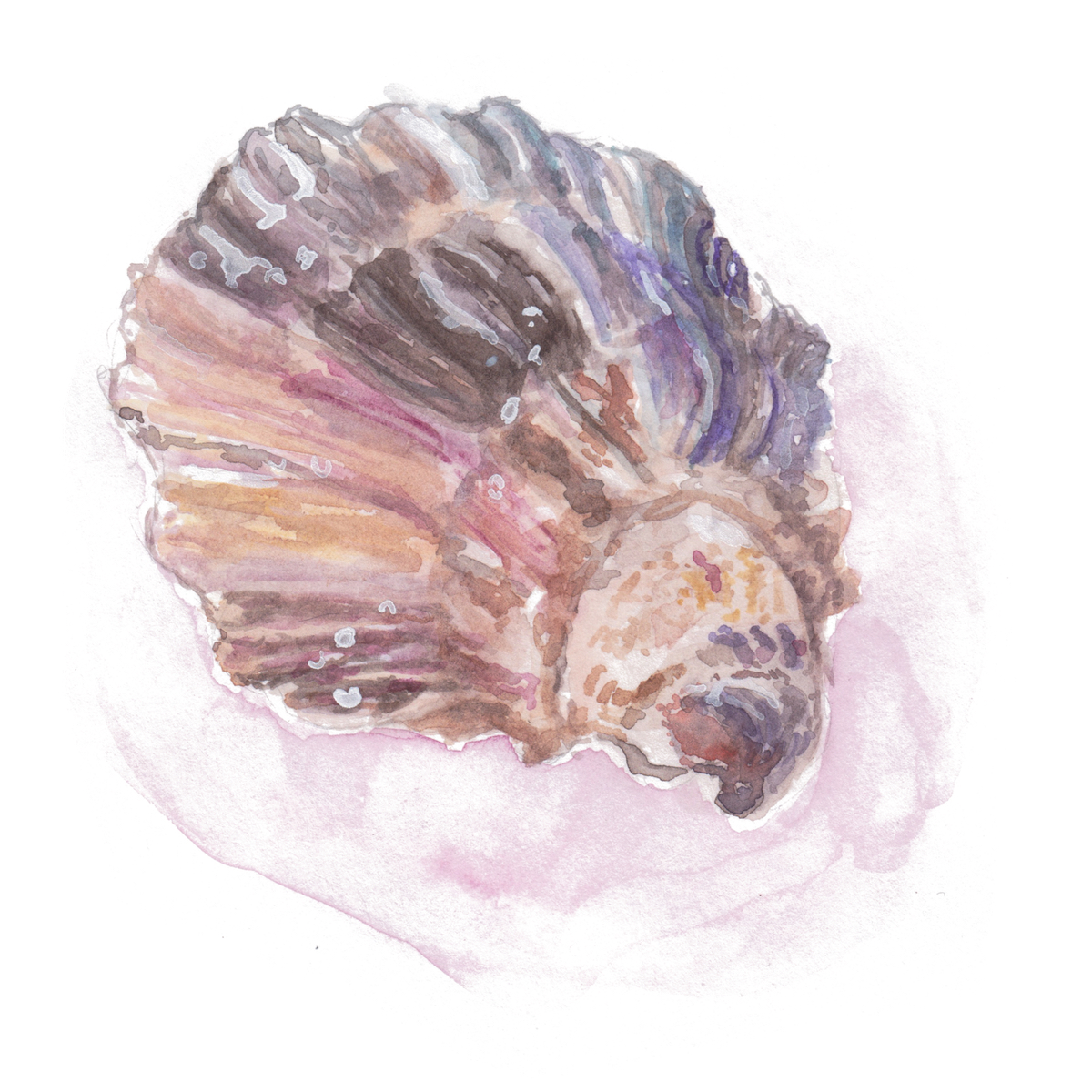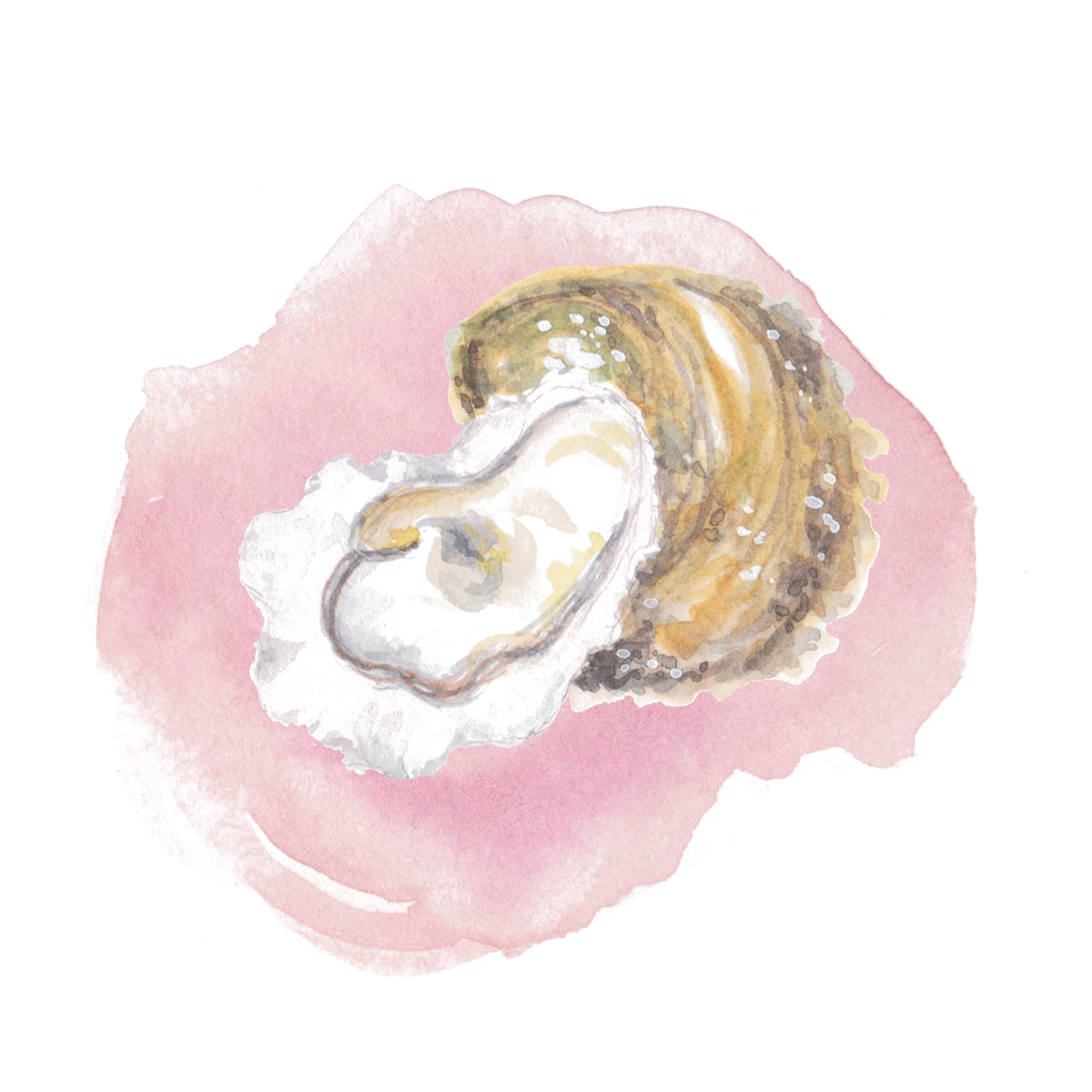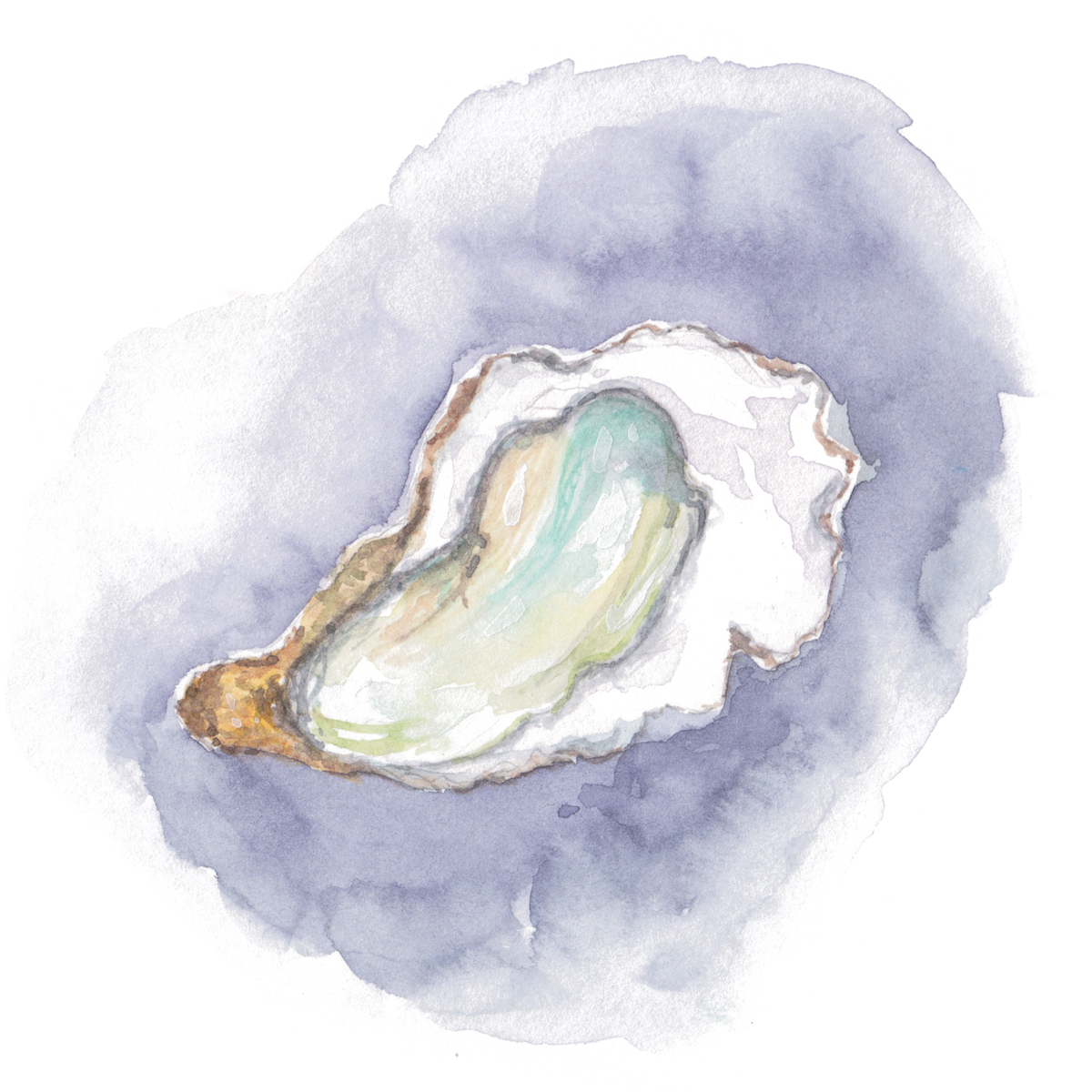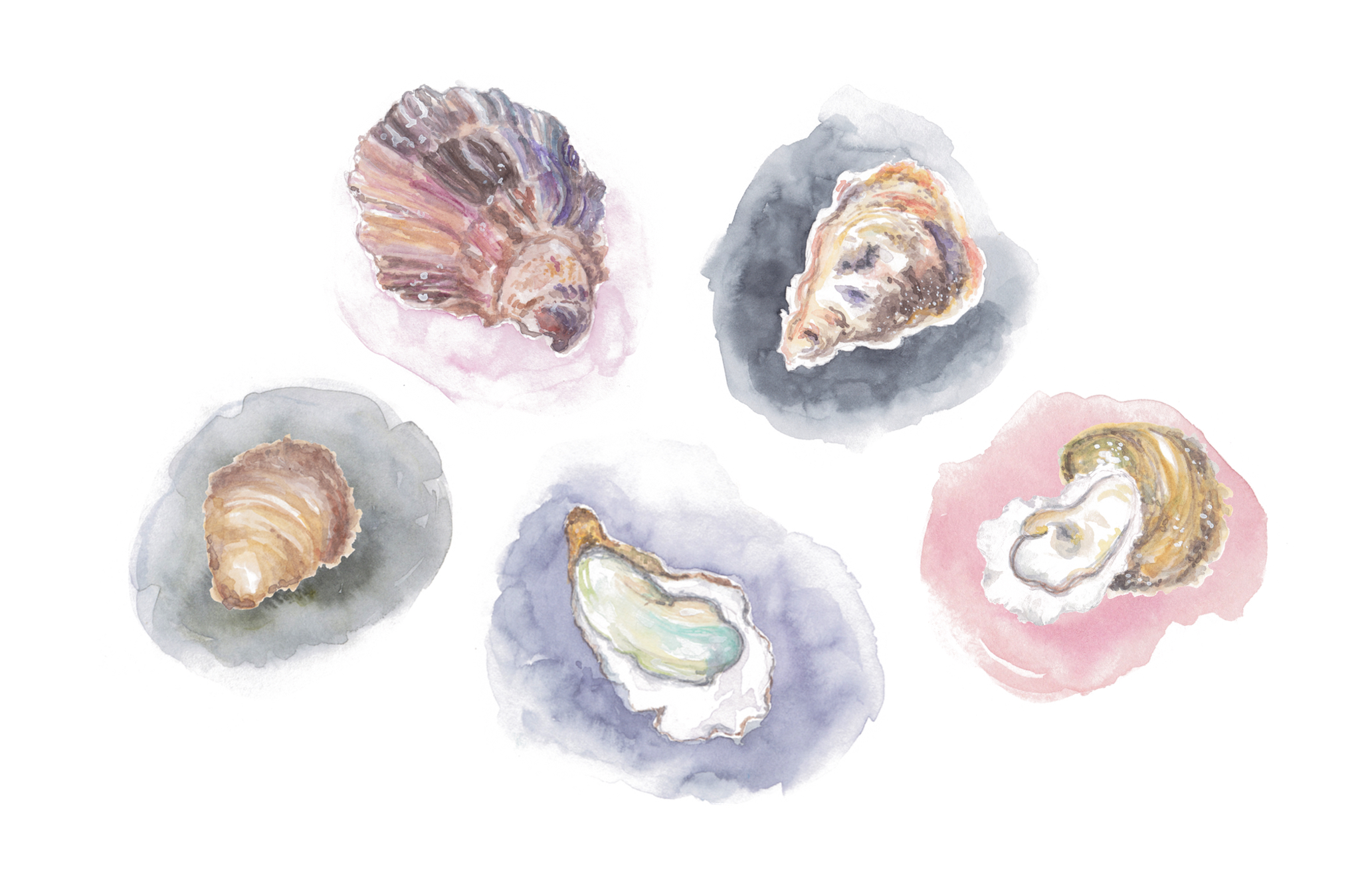These Oysters Won't Be Edible in Our Lifetime
The road to Queens was once paved with oyster shells, so plentiful was Crassostrea virginica in New York’s waters. But after centuries of mismanagement and mistreatment, there aren’t many left, and the road is reduced to good intentions. Particularly Pete Malinowski’s.
A second-generation New York oyster farmer, Malinowski was named director of the Billion Oyster Project in 2014. He and his team are attempting to bring about nothing less than the Eastern oyster’s miraculous return. But it’s not to eat; oysters growing in New York City today are inedible and potentially toxic due to pollutants in the water. Instead, the project hopes to improve the environment.
As water passes through an oyster, the shellfish cleans impurities from the water. That’s why oysters grown a few miles apart can taste so radically different—their flavors are a direct result of their hyperlocal aquatic environment. The more robust the colony, the cleaner the water. As humans dredged the seafloor and polluted the water, they destroyed the oyster population, which made the pollution worse. Though hopes of bringing oysters back to clean the waters are high, the water is almost too dirty to clean.
“We call oysters ‘ecosystem engineers,’” Malinowski said. They’re a “keystone species,” meaning their habitats anchor other marine life in the area, including fish, snails and crabs. By bringing oysters back, Malinowski hopes they’ll clean the water and build a home for other animals.
This fall, they will celebrate the first anniversary of a 50,000-member oyster community installed in Jamaica Bay. It’s one of a dozen in-water research sites operated by the project and just a small portion of the 20 million oysters the project currently manages around the city.
Each summer, life springs up in Jamaica Bay and a few fish swim through, but the wildlife is only a fraction of what it once was. “You used to put a basket in the water and pull it up and it’d be full of fish,” Malinowski said. But that was over a century ago.
“We ate them all,” Malinowski said of the oyster’s decline. New York’s waters were once home to trillions of oysters. In 1909, the state was selling 1.4 billion oysters per year, 80 million of which came from Jamaica Bay alone.
The pollution only made things worse. As Mark Kurlansky wrote in his seminal text The Big Oyster: History on the Half Shell, in 1909, the same year New York state saw record sales, the oysters already had “a reputation for tasting like petroleum.” The taste didn’t lie—runoff from the city’s big manufacturing plants, as well as raw sewage from its inhabitants, was being poured straight into the harbor, often directly on top of oyster beds.
In 1921, responding to what it saw as a looming health crisis, the city shut down the oyster beds Malinowski is now trying to revive. “Jamaica Bay, Foul with Sewage, Closed to Oyster Beds; 300,000 Bushels Gone,” The New York Times reported in a front-page story. The rest of the beds followed, with oystering outlawed citywide by 1927.
They’ve never reopened to commercial harvest. That’s why the Billion Oyster Project populations aren’t edible—and likely won’t be in our lifetimes.
Every few months, Malinowski and his team take a few skiffs out onto the bay, sea salt spraying their Billion Oyster Project–branded life jackets. They boat around to an inauspicious site where black plastic boxes with bird-proof metal spikes are floating in a chain gang across the surface of the water. Inside are Malinowski’s prized bivalves, which he bought from a Massachusetts farmer when they were 3 years old. They’re encapsulated like this because they’re science experiments, not replacement reefs. The researchers isolate them so they have a better shot at learning if and how oysters survive and breed in these waters.
On a trip to the site in March, they looked through the cages to estimate their health. Of the 50,000, only 3%—or 1,500 individuals—are estimated to have died. On occasion, the team takes sample oysters back to a lab to test their reproductive health or to see if they’ve contracted any disease.
Though raw sewage isn’t being dumped directly into Jamaica Bay, the wetland still receives huge outpourings of nitrogen, a byproduct of the city’s wastewater treatment plants. The nitrogen can lead to harmful algae blooms and discourage fish from populating the bay. It also makes the oyster’s job—to serve as nature’s Brita filter—extremely difficult.
Malinowski explained the greater challenge is the city’s concern that people will think these oysters are edible, eat them and get sick. “The fear of poaching is the single biggest limiting factor to our work,” he said. But Malinowski thinks those concerns are unfounded and said he has never come across any poachers himself.
Still, the fear of poaching remains pervasive. When I contacted the city Department of Environmental Protection, a spokesperson said they didn’t want a story on these oysters “anywhere near the word ‘edible.’”
The project’s untarnished track record may be attributed to the team’s efforts to educate waterside populations about the oysters’ ecological value—and the danger they pose gastronomically. The project visits schools, shares educational materials and holds community events. While involvement varies by site, the outreach seems to work, with many people embracing the transplant oysters as neighbors and some even volunteering with the Billion Oyster Project.
For now, an edible New York City oyster is a century off. But thanks to environmental cleanup efforts, advancing waste management techniques and the Billion Oyster Project, the waters are looking more hospitable than they have for the last 100 years.
Half Shells are Big Business
The East Coast boasts dozens of oyster farms and varieties. While oysters in New York City’s waters may not be edible, colonies winding up the twin coasts of Long Island certainly are. A few favorites include:

Pine Island
Frank M. Flower & Sons is considered the last of the old-school oyster companies. Founded in 1887, they harvest with a boat straight out of the 1930s and produce a meaty, time-tested crowd pleaser.

Bluepoints
These mild, earthy oysters were once so popular, enterprising shucksters tried to pawn off their lesser shells as beloved Bluepoints. In 1908, to combat a wave of false advertising, legislators made a move to legally define the Bluepoints’ range as the Great South Bay of Long Island.

Fishers Island
Home to Pete Malinowski’s parents’ farm, Fishers Island oysters offer up an unadulterated splash of the sea. They’re fresh, sweet, salty and heartily endorsed by the Billion Oyster Project.

Montauk Pearls
These bivalves are briny but pure. The farmers pride themselves on the oyster’s cup, which has picture-perfect texturing and a teardrop shape, which they guarantee by shaking the oysters as they grow.

Peconic Golds
Characterized by their smoky finish, Peconic Golds are creamy, flush with minerals and grow with an edible Gracilaria seaweed. Like the pearls, golds are famously photogenic.
Pete Malinowski | @billionoysterpete
Billion Oyster Project | @billionoyster
Mark Kurlansky | @codlansky
The Big Oyster: History on the Half Shell
Frank M. Flower & Sons
Fisher Island Oyster Farm

This story won the "Feature Story: Sustainability" category at the 2018 Eddy Awards.





